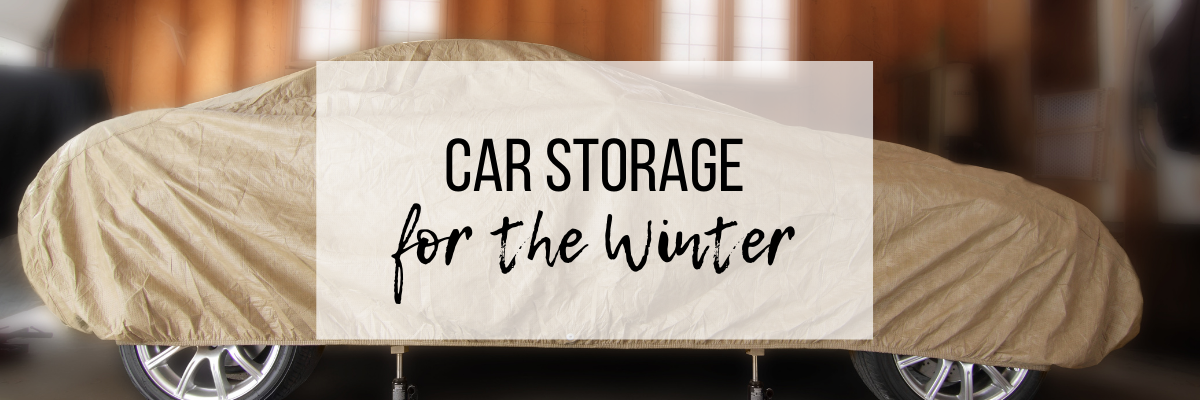Maintaining the value of a car is important to many car owners and for a variety of reasons. Cars are a large investment for many people and are critical for people’s job, kids, and everyday life activities around the globe. Maintaining a car is not always an easy task and it is even harder for those living in extreme climates to keep their car in pristine condition. In this blog, I will discuss how to prepare your car for winter and what options are available to you.
Car Storage Options
After researching how to store a car for the winter, I found that nearly all credible car companies and car professionals recommended indoor storage for cars during the winter. The best place to store a car is a dry, dark, and clean location with limited access, space to maneuver, and protection from theft and natural elements. Concrete floors are optimal for car tires because concrete minimizes moisture from warping the tires. Climate controlled storage is the best storage option for a car because it protects it from the humidity and extreme temperatures that damage the car. Climate controlled storage can be pricy for some people and the cheaper option they consider is outdoor storage.
If you have to store outside:
Storing a car outside in freezing temperatures is not recommended by mechanics or car companies, but for many this is the only option possible. If storing outside, here are some extra precautions to take to prevent any extreme damage:
- Get a weather resistant cover with vents.
- Take off tires and put the car on jacks at all four corners of the car, this will prevent any tire damage from the freezing temperatures or from moisture on the ground.
- Chipped paint or any marks must be touched up otherwise humidity will rust the exposed metal.
- Remove windshield wipers, otherwise they will stick to the windshield and leave hard to remove residue.
- If not removing tires: over inflate tires to advised psi for long-term storage (ask local mechanic or check owners-manual), drive car 15 minutes every two weeks, and change out low profile tires for winter tires.
- This will prevent flat spots from forming in your tires
- Spray a protective coat of rubberized undercoating on any unpainted metal places annually to prevent rusting.
- Look up the best ways to keep pests out of your vehicle
Tips for Winter Storage
These are not the only precautions to take, but extra precautions one must take if they are storing a car outside. Moreover, it is difficult to keep a car functioning properly – especially when temperatures are extreme in the winter. A climate controlled storage unit eliminates these extra precautions and protects the car from natural elements such as humidity, extreme temperatures and pests. However, a car should that is sitting for a long time (over 30 days) requires extra attention and care. Here are precautions to take regardless of where you are storing a car:
- Contact your car dealership or a mechanic for advice on how to specifically store your car.
- Read the owners-manual for specifications for storing a specific car.
- Invest in a car cover with vents.
- Detail the inside of your car before storing to eliminate contaminants.
- Wax the exterior to protect the paint from damaging due to moisture, oxidation, or a new car cover from scuffing the paint.
- Top off all fluids in the engine (if storing more than 30 days).
- Get an oil change right before storing (if storing more than 30 days).
- Fill up right before storing and add fuel stabilizer while doing so (if storing more than 30 days).
- Over inflate and rotate tires before storing (if storing more than 30 days).
- Put steel wool in exhaust pipe and other openings to draw pests away (read about a variety of pest control methods online).
- Leave car in neutral and put chocks behind and in front of all four tires.
- Disconnect the negative battery cable.
- Get a carwash before you store.
- Consider buying a trickle down charger or battery tender to prevent your car’s battery from discharging.
- Try to run your car every two weeks for 15 minutes while running a/c to ensure parts are functioning properly.
- Keep the car’s insurance on while storing so the company will not have any extra incentive to raise your rates in the future.
What to Check After Storing
Hopefully everything goes smoothly while you store your car for the winter. The best way to insure your car will be safe for the winter months is to rent a climate controlled storage unit. Once spring comes around, you will finally take your car out for the warmer weather. Here are some “house cleaning” to do before you take the car out on the road:
- Check under the hood for any evidence of infestation – chewed wires or other chewed engine components and nests.
- Check the windshield wipers for any damage to the rubber or put them back on if you took them off.
- Check to make sure the brakes are working properly.
- Check the fluid levels and make sure there are no leaks in the engine.
- Wash your vehicle and wipe down the interior of the car.
- Make sure the battery is reconnected and in working condition.
We hope that these storage tips have helped and if so let us know via Google review, Yelp, Facebook, or Yellow Pages. For any further questions regarding car storage during the winter contact our leasing agent Jeff.

